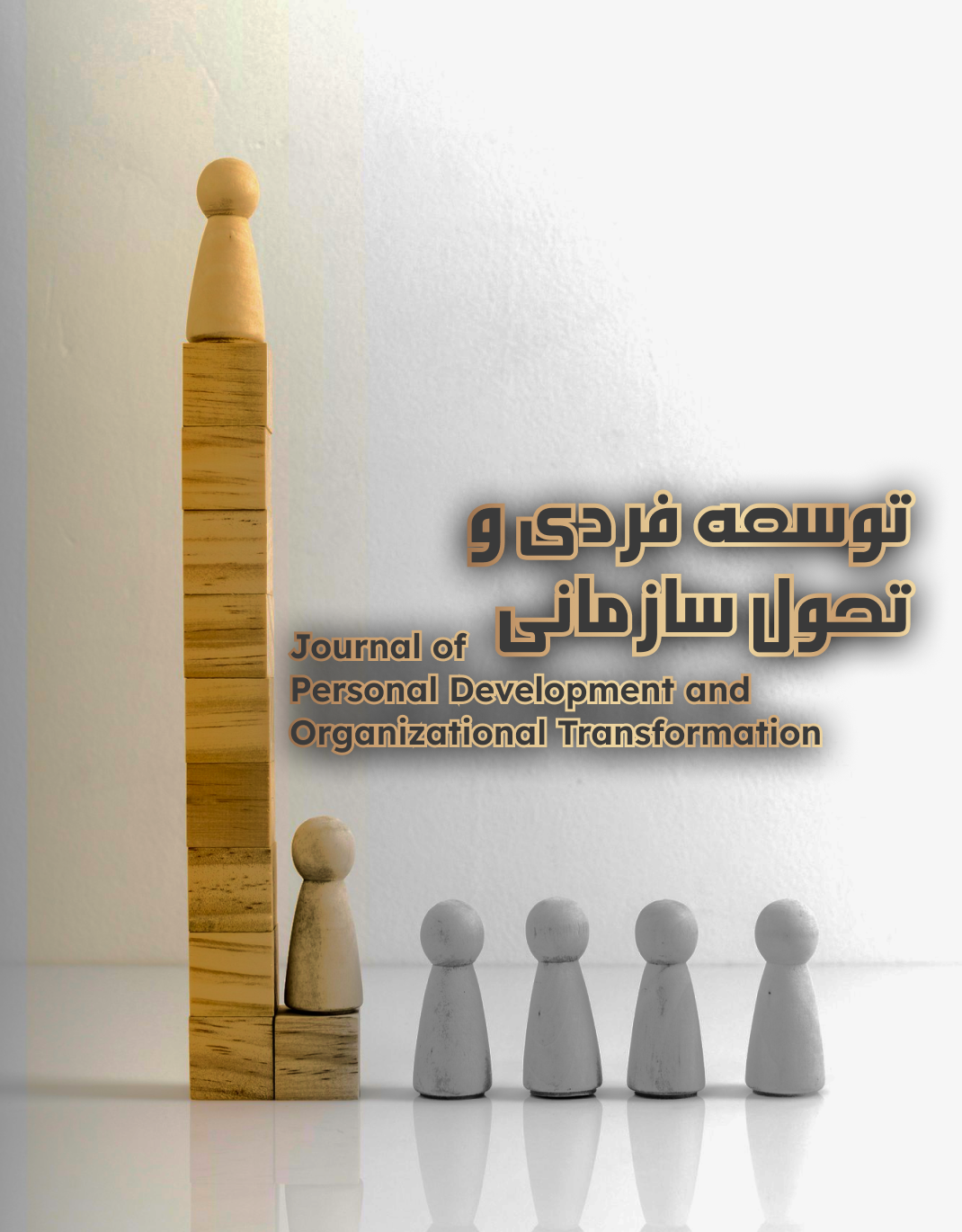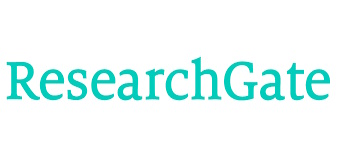توسعه چارچوبی مفهومی برای مدیریت تلههای اجتماعی در سازمانهای دولتی ایران
کلمات کلیدی:
تله اجتماعی, ابعاد چندگانه سازمانی, راهبردهای پیشگیری, فرهنگ سازمانی, رفتارهای تقلیدیچکیده
با توجه به چالشهای سازمانهای دولتی ایران در مواجهه با تلههای اجتماعی که منجر به کاهش بهرهوری و اعتماد عمومی میشود، این پژوهش با هدف طراحی و ارائه یک مدل جامع برای مدیریت این تلهها انجام شده است. این مدل تلاش دارد تا با شناسایی عوامل مؤثر و ارائه راهکارهای عملی، به بهبود فرآیندهای تصمیمگیری و تعاملات سازمانی کمک کند. این پژوهش از نوع کیفی و با استفاده از رویکرد نظریه دادهبنیاد انجام شده است. که از طریق تجزیهوتحلیل دادههای جمعآوریشده از مصاحبههای عمیق با خبرگان بهدستآمده است. برای انتخاب نمونههای پژوهش از روش نمونهگیری هدفمند و گلوله برفی استفاده شد. در ابتدا تعدادی از افراد کلیدی در حوزههای مدیریت دولتی، فناوری اطلاعات، حقوق و علوم اجتماعی که با موضوع تلههای اجتماعی آشنایی داشتند بهعنوان هسته اولیه انتخاب شدند و سپس بر اساس معرفی این افراد، سایر خبرگان شناسایی و به مصاحبه دعوت شدند (22 نفر). فرآیند کدگذاری در سه مرحله کدگذاری باز، محوری و انتخابی صورت گرفت. به منظور اعتبارسنجی نتایج پژوهش، معیارهای ارزشیابی لینکلن و گابا (1985) شامل اعتبار، قابلیت انتقال، قابلیت اعتماد و تأییدپذیری استفاده شد. برای بررسی پایایی کدگذاریها از روش توافق بین دو کدگذار استفاده شد و پایایی در سطح 85 درصد قرار گرفت. در نهایت، مدل نهایی پژوهش با استفاده از نظرات خبرگان مورد تأیید و اعتبارسنجی قرار گرفت. یافتههای این پژوهش نشان داد که مدیریت تلههای اجتماعی در سازمانهای دولتی ایران مستلزم توجه به هفت بعد کلیدی است: شناختی، رفتاری، روانی-عاطفی، سازمانی، مدیریتی، اجتماعی و اخلاقی-ارزشی. این پژوهش با ارائه مدلی جامع برای مدیریت تلههای اجتماعی، نوآوری قابلتوجهی در تحلیل این پدیده در سازمانهای دولتی ایران دارد. با توجه به ابعاد چندگانه شناختی، رفتاری و سازمانی، این مدل راهکارهای عملی و نوینی برای بهبود تعاملات سازمانی و ارتقای شفافیت و کارایی سازمانها پیشنهاد میکند
دانلودها
مراجع
Akbari Emami, S., Abedin, B., & Jami Pour, M. (2024). Strategic Consensus Challenges from the Perspective of Government Managers: Application of Social Network Analysis Methodology. Iranian Journal of Public Administration Studies, 7(1), 29-71. https://www.jipas.ir/&url=http:/www.jipas.ir/article_190203.html?lang=fa
Andina-Díaz, A., Feri, F., & Meléndez-Jiménez, M. A. (2023). The bureaucracy trap. Economics Letters, 228, 111166. https://doi.org/10.1016/j.econlet.2023.111166
Bazerman, M. H., & Tenbrunsel, A. E. (2011). Blind spots: Why we fail to do what's right and what to do about it. Princeton University Press. https://doi.org/10.1515/9781400837991
Berens, S. (2020). Opting for exit: informalization, social policy discontent, and lack of good governance. Latin American Politics and Society, 62(2), 1-28. https://doi.org/10.1017/lap.2019.58
Carvalho, S., Kurian, P. O., Carvalho, C., & Carvalho, F. K. (2023). Fostering leader feedback seeking at the workplace: The role of HRD practice. Advances in Developing Human Resources, 25(1), 57-66. https://doi.org/10.1177/15234223221137331
Coldwell, D. A. (2019). Negative influences of the 4th industrial revolution on the workplace: Towards a theoretical model of entropic citizen behavior in toxic organizations. International journal of environmental research and public health, 16(15), 2670. https://doi.org/10.3390/ijerph16152670
Cumming, G. S. (2018). A review of social dilemmas and social‐ecological traps in conservation and natural resource management. Conservation Letters, 11(1), e12376. https://doi.org/10.1111/conl.12376
Daliri, H. (2019). Future Studies of Employment and Unemployment with an Emphasis on General Employment Policies. Strategic and Macro Policies, 7(27), 346-371. https://doi.org/10.32598/JMSP.7.3.2
Erlingsson, G. Ó., Jónsdóttir, G. A., & Kristinsson, G. H. (2022). Does legitimacy mitigate corruption? The relevance of social traps in low-corruption contexts. International Journal of Public Administration, 45(14), 1027-1038. https://doi.org/10.1080/01900692.2021.1955926
Fornander, L., Laukkanen, K., Molin, I., Nilsson, L., & Berggren, P. (2023). Team communication patterns during real and simulated trauma resuscitation-a social network analysis. Ergonomics, 1-26. https://doi.org/10.1080/00140139.2023.2221000
Hadziahmetovic, N., & Salihovic, N. (2022). The role of transparent communication and leadership in employee engagement. International Journal of Academic Reserach in Economics and Management Sciences, 11(2). https://doi.org/10.6007/IJAREMS/v11-i2/14067
Hardin, G. (1968). The tragedy of the Commons. Science, 162(3859), 1243-1248. https://doi.org/10.1126/science.162.3859.1243
Hu, S., Ji, F., & Li, D. (2023). Impacts of Social Media Usage in Facilitating Social Commerce: The Roles of Social Support and Cultural Identity Change. International Conference on Human-Computer Interaction, Cham. https://doi.org/10.1007/978-3-031-35921-7_19
Inwang, I. U., Okponganam, G. E., Odohoedi, J. O., & Attat, N. T. (2024). Conflict Management Strategies and Administrative Effectiveness: Issues in Public Secondary Schools in Akwa Ibom State. International Journal of Multidisciplinary Innovative Research, 4(3), 73-81. https://journals.co.za/doi/abs/10.10520/EJC140929
Iqbal, J., Asghar, A., & Asghar, M. Z. (2022). Effect of despotic leadership on employee turnover intention: mediating toxic workplace environment and cognitive distraction in academic institutions. Behavioral Sciences, 12(5), 125. https://doi.org/10.3390/bs12050125
Khalili, K., & Fathi, M. (2024). A Meta-Analysis of Research on the Consequences of Transformational Leadership. Organizational Culture Management, 22(3), 259-273. https://jomc.ut.ac.ir/article_97587.html
Killingsworth, P., & Eschenbacher, L. (2018). Designing organizational structures: Key thoughts for development. The Bulletin of the American Society of Hospital Pharmacists, 75(7), 482-492. https://doi.org/10.2146/ajhp170657
Lamperski, R. J. (2018). Work Namaste: The importance of mattering at work, and how a leader can create an environment where employees feel they and their work matter University of Pennsylvania]. https://repository.upenn.edu/entities/publication/a460f6e3-6229-4727-8549-854b2df76992
Lazem, S., & Gracanin, D. (2010). Social traps in second life. 2010 Second International Conference on Games and Virtual Worlds for Serious Applications, https://doi.org/10.1109/VS-GAMES.2010.29
Manes, E., Shapira, D., & Tobol, Y. (2018). Traps and incentives. The BE Journal of Theoretical Economics, 18(2), 20160036. https://doi.org/10.1515/bejte-2016-0036
Mohammadzadeh, S., & Yarmohammadi Vasel, M. (2018). Preliminary estimation of the reliability and validity of the social trap scale. Social Cognition, 7(1), 160-143. https://sc.journals.pnu.ac.ir/article_4894.html
Molavi, Z., & Haji Naghi, M. (2024). Identifying the Factors Affecting the Occurrence of Intra-Organizational Stroke in Governmental Organizations of Qom Province. Organizational Culture Management Journal, 22(2), 141-160. https://journals.ut.ac.ir/article_93978.html
Naznen, F., Al Mamun, A., & Rahman, M. K. (2022). Modelling social entrepreneurial intention among university students in Bangladesh using value-belief-norm framework. Current Psychology, 1-18. https://doi.org/10.1007/s12144-022-04119-2
Nikitara, M., Dimalibot, M. R., Latzourakis, E., & Constantinou, C. S. (2024). Conflict Management in Nursing: Analyzing Styles, Strategies, and Influencing Factors: A Systematic Review. Nursing Reports, 14(4), 4173-4192. https://doi.org/10.3390/nursrep14040304
Parks, C. D. (2020). Social loafing in the management of social dilemmas Individual Motivation Within Groups. Academic Press. https://doi.org/10.1016/B978-0-12-849867-5.00008-2
Pollack, L., Munson, A., Zepeda, E., Culshaw-Maurer, M., & Sih, A. (2022). Variation in plastic consumption: social group size enhances individual susceptibility to an evolutionary trap. Animal Behaviour, 192, 171-188. https://doi.org/10.1016/j.anbehav.2022.07.010
Rahimzadeh, F., Shokoohi Fard, S., & Hazeri Niri, H. (2022). The Effect of Corruption on Financial Inclusion (Application of System Generalized Method of Moments Approach). Economic Modeling Quarterly, 16(57), 33-48. https://journals.iau.ir/article_692466.html
Rajabi Farjad, H., Mirsepasi, N., & Asadi, V. (2024). Identifying and prioritizing factors affecting organizational vitality. Iranian journal of management sciences, 19(73), 99-118. https://journal.iams.ir/article_420.html?lang=fa
Rasool, S. F., Wang, M., Tang, M., Saeed, A., & Iqbal, J. (2021). What a toxic workplace environment effects the employee engagement: The mediating role of organizational support and employee wellbeing. International journal of environmental research and public health, 18(5), 2294. https://doi.org/10.3390/ijerph18052294
Senge, P. M. (2006). The fifth discipline: The art and practice of the learning organization. Broadway Business. https://www.scirp.org/reference/referencespapers?referenceid=1122355
Sterman, J. D. (2000). Business Dynamics: Systems thinking and modeling for a complex world. MacGraw-Hill Company. https://www.researchgate.net/publication/44827001_Business_Dynamics_System_Thinking_and_Modeling_for_a_Complex_World
Tavakolian Ardakani, S. (2022). The Impact of Toxic Organizational Environments on Employee Engagement with Respect to the Mediating Role of Organizational Support and Employee Well-being. New Research Approaches in Management Sciences, 8(28), 1-12. https://jnraims.ir/browse.php?a_id=307&sid=1&slc_lang=fa
Volchik, V. V., Korytsev, M. A., & Maslyukova, E. V. (2018). Institutional traps and New Public Management in education and science. Управленец, 9(6), 17-29. https://cyberleninka.ru/article/n/institutional-traps-and-new-public-management-in-education-and-science
دانلود
چاپ شده
ارسال
بازنگری
پذیرش
شماره
نوع مقاله
مجوز
حق نشر 2025 Sajad Toupaesfandyari (Author); Alireza Banagar; Davood Kia Kojouri, Azim Salahi Kojour (Author)

این پروژه تحت مجوز بین المللی Creative Commons Attribution-NonCommercial 4.0 می باشد.







